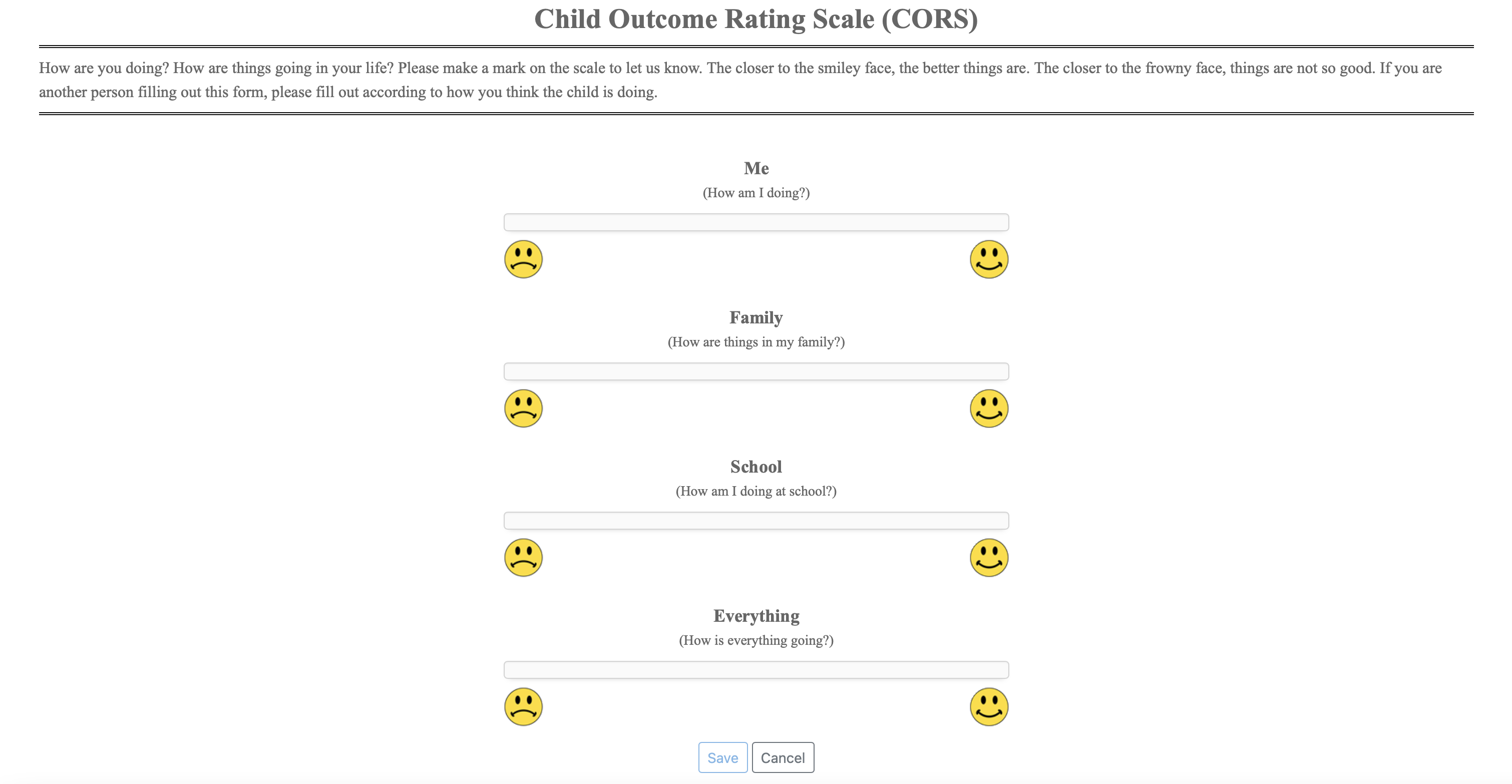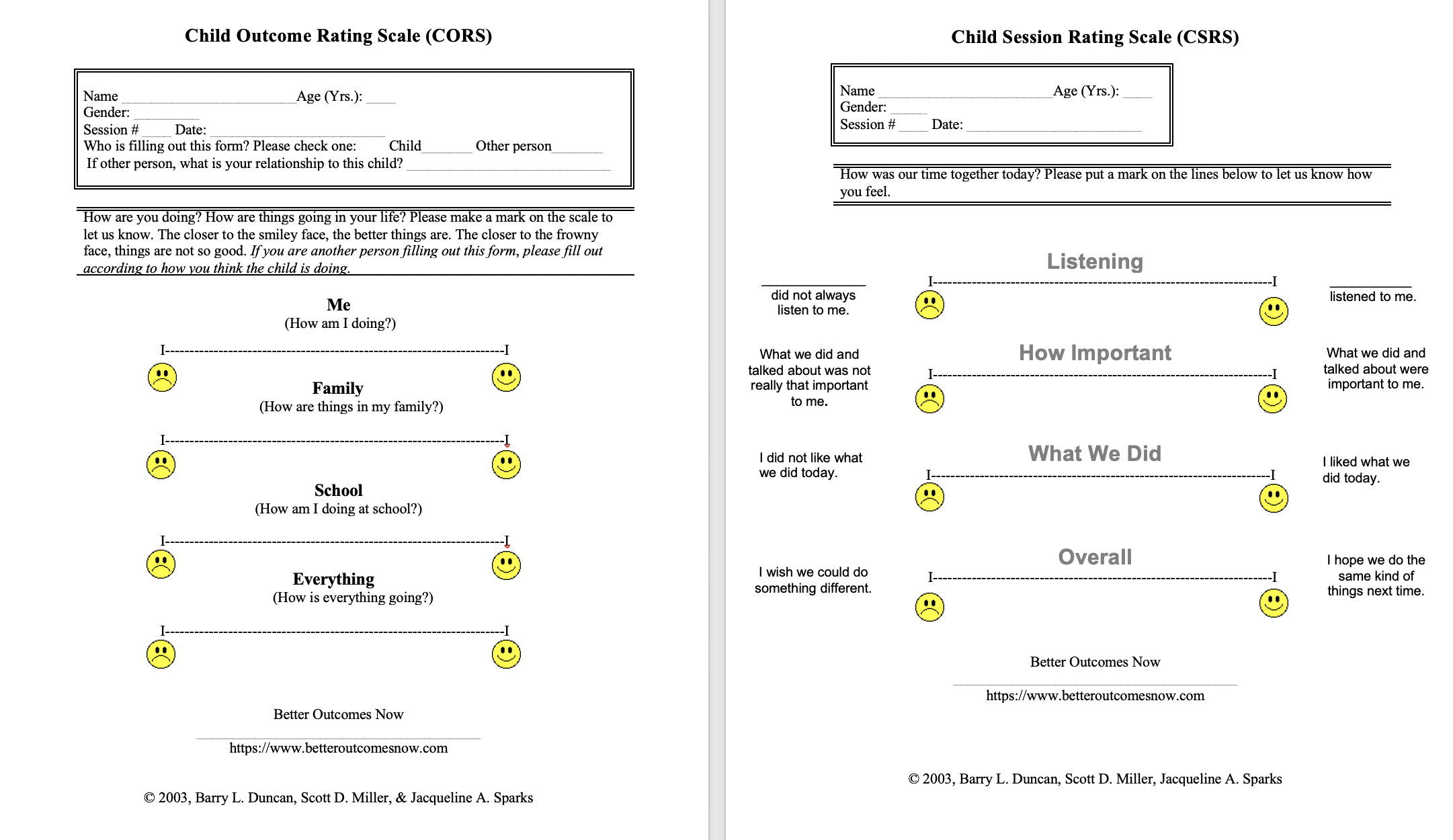October 21, 2021 04:49 PM

Giving youth a voice in therapy is given a lot of lip service. But just like privileging clients, when the doors are closed or the teletherapy begins, whose voice is really heard? This is especially true with children and adolescents since they are most likely to be “volunteered” for therapeutic services by someone else. And it is especially true about the young person’s perspective of the benefit and experience of therapy.
After the Outcome Rating Scale and the Session Rating Scale were co-authored and I developed the clinical process of the Partners for Change Outcome Management System (PCOMS), first delineated in the original PCOMS manual, Heroic Clients, Heroic Agencies: Partners for Change (Duncan & Sparks, 2002), my friend and colleague Dr. Jacqueline Sparks and I sought to expand the benefits of client privilege to youth and their families — and the Child Outcome Rating Scale (CORS) and Child Session Rating Scale (CSRS) were born.

The First Outcome and Alliance Scales for Children
Ensuring that young people have a voice in therapeutic services is why the Child Outcome Rating Scale and Child Session Rating Scale were developed. They are the first self-rated mental health outcome measures and therapeutic alliance measures for children 12 and under. Apparently, before then, the field didn’t care so much about what the youth thought of the therapy they received.
The clinical process with youth and their families was first described in the second edition of Heroic Clients, Heroic Agencies (Duncan & Sparks, 2007) as well as in Brief Intervention in the Schools, a book with my longtime friend, Dr. John Murphy (Murphy & Duncan, 2007).
Working with Youth and Families
The logistics of PCOMS administration with youth and families should feel familiar to therapists accustomed to the complexity of family work (read 5 Tips for Using Outcome Measures with Families). A major value of PCOMS in systemic work is its capacity to initiate conversations about discrepant views in objective, non-blaming ways. The therapist’s inquiry about the differences in CORS or Outcome Rating Scale scores sets the stage for developing mutual goals and a means to measure success. Effective navigation by the therapist of these differences should be reflected in CSRS or Session Rating Scale ratings, allowing the therapist a chance to recalibrate ongoing work accordingly.
The transparency of the PCOMS process establishes a space where all views are respected and meanings are co-explored; continuous responsiveness to clients’ unique views, grounded in valid, objective data, fosters dialogue, the emergence of mutual solutions, and a built-in safety net for avoiding treatment failure.
Read more about implementing PCOMS with young people and families in the new PCOMS manual.

Request a free trial of the web-based outcome measurement tool, Better Outcomes Now, today to start using PCOMS and tracking progress of therapy, either remotely or face-to-face, with your youth clients and their families:





.png)


.png)